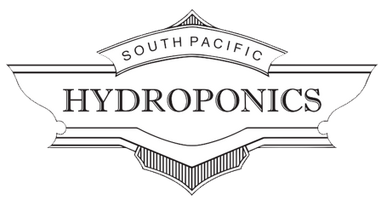*** Order Online Now for Home Delivery or Click & Collect... ***
GT Silica
$18.18
Buy and save
Buy and earn $0.10 Loyalty for your next purchase
Loyalty is a discount program that lets you buy products and earn points to redeem on your next purchase. Your Loyalty balance is updated when you pay online or in-store. The Loyalty amount shown on this page can be recalculated at the checkout.
Size
Please choose
Save this product for later
GT Silica
Product Details
Brand: Growth Technology
Silicon is the second most abundant element in the earths crust making up a component of most rocks. Plants absorb silicon from silica that has dissolved into the soil water. As you can imagine the concentration of silicon in soil water is not that high because rocks do not tend to be all that soluble. Silicon concentration in soil water generally does not get above 20 ppm and this is the level we recommend for hydroponic nutrient solutions.
Silicon is a beneficial plant nutrient found in virtually all soils but not, until now, in hydroponic nutrient solutions. Silicon will strengthen plant cell walls and become a barrier against water loss, fungal infection, particularly mildews, and insect and mite attack.
Silicates are very alkaline and care must be taken with its use. Always check the pH after silicon has been added to the tank.
Handling and Care
- always wear gloves and eye protection
- always store in a locked cupboard
- keep away from children
- dilute with water before adding to tank
What is it exactly?
GT Silicon is a concentrated mixture of silicic acid and potassium hydroxide. This is often referred to as potassium silicate. Its purpose is to add silicon to hydroponic nutrient solutions.
What does it do then?
The effect of silicon comes from the fact that plants deposit silicon in their cell walls and this has the effect of strengthening the cell wall which acts as a barrier between the inside of the plant cell and the environment. The stronger this barrier the better a plant can resist attacks from insects and fungi and also the increased cell wall rigidity gives better tolerance to heat and water stress.
What’s it all about?
Silicon belongs to a class of plant nutrients termed “beneficial nutrients”. These nutrients are not totally essential to the plant but the plant will grow better if it is present. It has even been claimed that the absence of silicon from nutrient solutions constitutes a form of stress to the plant.
OK, how do I use GT Silicon?
Silicon cannot be added directly to concentrated nutrient solutions because it will precipitate from the solution and be unavailable to the plant so it has to be supplied as a separate additive. If GT Silicon is diluted in the nutrient tank at the rate of 1ml per litre of nutrient solution, it will give a concentration of 20ppm silicon, the usual Dutch recommendation.
How often should I dose the tank?
For run to waste systems, add the GT Silicon when making the nutrient solution. For recirculating systems add the GT Silicon to the tank on a weekly basis.
Precautions
Yes. GT Silicon is very alkaline. Always check the pH of the nutrient solution after the silicon has been added and correct if necessary. Don’t get it on your skin or clothes. Good practice indicates care should be taken. Keep away from children.
What should I expect if I use GT Silicon?
Silicon provides real benefits to plants, the main one being increased resistance to pathogens.
Display prices in:AUD

